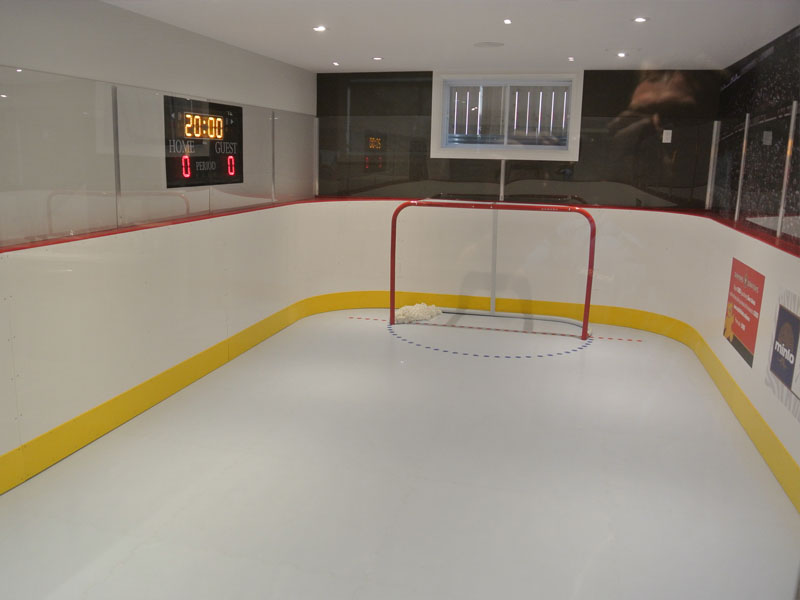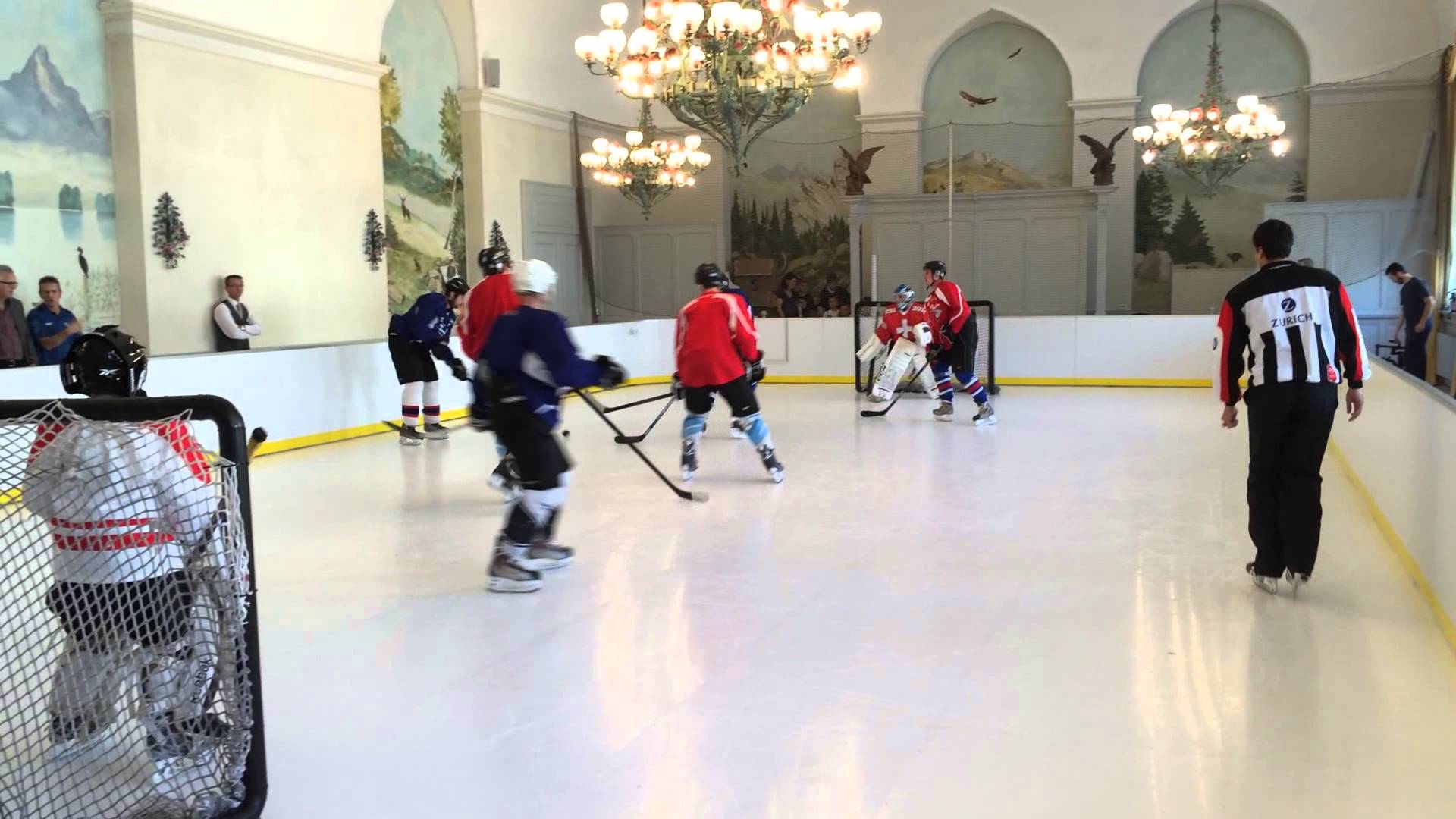As the age of technology continues to advance, the developers that have ventured into the realm of synthetic ice have been able to create a type of flooring that is so similar to real ice that more and more skaters are turning towards it for an alternative way to enjoy the fun of ice skating. For some people, the sheer fact that they can easily install ice-like flooring into their own homes so that they can ice skate whenever they want inspires them to invest in polymer-based flooring. For others, the fact that installing artificial ice can cut down on excess pollution makes them want to give the flooring a try.
Table of Contents
Synthetic Ice Vs. Frozen Water
It is no secret that ice is merely water in its frozen state. One of the characteristics of traditional ice that makes it so popular to skate on is that it is naturally slick and allows skaters to glide effortlessly across its surface as if they were practically floating on air.
Synthetic ice, on the other hand, was created in a laboratory and can only come close to the slickness of traditional ice. High-quality man-made ice flooring can be very similar to real ice, but without the excess baggage of necessary energy sources to keep it in usable condition.
Because water and ice are natural elements of the earth, it is easy to assume that ice skating rinks are better for the environment than scientifically formulated plastics. However, keep in mind that in order for ice to remain frozen when the outside temperature is above 32 degrees Fahrenheit there must be a substantial amount of energy to cool a room enough to keep the ice from melting and turning into water.
Since the ice will need a constant source of energy to keep it cool enough to stay frozen, the amount of energy that is necessary to keep the ambient air cold enough to sustain ice is preposterous. In order to keep a home that is in 100 degrees Fahrenheit weather under 80 degrees Fahrenheit by way of air conditioning, it takes an exuberant amount of energy. Just think how much more energy it would take to keep that same home under 32 degrees Fahrenheit.
How Ice Rinks Work
Ice skating has been around for literally thousands of years. Explorers found remnants of ice skating gear that was crafted by ancient humans with the use of animal bones and skins. Back before there was a way to keep the ice frozen throughout the summer, in order for people to skate all year round they had to live in a climate that was cold all year round. Otherwise, the only way they could enjoy ice skating was if it were cold outside.
Although in today’s world we see ice skating as a form of leisure and entertainment, the people back in the ancient days most likely ice skated in order to hunt and forage for food. Ice skating would allow them to travel faster than they would if they were on foot.
It turns out that animal bones and metal blades cause friction upon the ice when they come into contact with it. When a person is upon a pair of skates on the ice, as they glide across the surface, the blades dig into the ice and cause a small amount of heat. This heat, in turn, causes the ice to melt just enough to create a thin barrier of natural lubricant so that the ice skates easily move across the area without much resistance at all.
The way that ice skating rinks work is that the ice flooring is kept frozen so that skaters can skate easily and flawlessly across the ice without excess resistance or drag. The ice allows for skaters – that know how to ice skate – to skate around the rink and do tricks or play competitive games such as hockey.
How Synthetic Ice Works
We mentioned earlier that synthetic ice is created in a lab. Here is where it gets interesting. Back in the early 1960s a couple of growing companies got together and created a type of artificial ice flooring that allowed skaters to skate upon it. However, in those times there was a lack of understanding about how plastics worked. The engineers created a flooring that required constant lubrication in order for it to accommodate skaters.
As long as the flooring was supplied with a constant application of a silicone-based gliding agent the skaters could skate clumsily across the flooring. This early version of artificial ice flooring was crude and cumbersome.
As time moved along and science evolved, developers discovered a way that they could create plastics on a molecular level and integrate certain substances within the plastics in order to create a flooring that was similar to ice.
Earlier we mentioned that the way that ice skaters were able to slide gracefully across the ice is that when they skated upon it, the ice skates activated heat which turned into a natural lubricant because of the melted ice. The goal with the newly discovered technology with plastics was to create a flooring that could emit lubricant as ice skates activated the flooring.
Polymer plastics began to come more into focus than ever before because of the way that developers could manipulate the molecular structure of the plastic into many different forms. After millions of trials and errors, developers found a way to create a type of polymer chain that would allow molecules from different agents to be infused into the other plastic molecules in a way that would cause lubrication to rise to the surface of the ice flooring as skaters skated across it. Much like the way that friction melted the ice into water, the ice blades upon the flooring would cause the flooring to secrete a layer of lubricant for the skates. This would later be referred to as “self-lubricating” synthetic ice panels.
The Neverending Argument
There are two sides to the coin of synthetic ice. Which causes more pollution:

- Continually using energy to keep an ice rink frozen?
- Creating synthetic polymer plastics in a factory environment?
The actual damage that formulating synthetic ice causes compared to how much damage the draining of energy that happens in order to keep ice floorings frozen is a matter of perspective. However, we do know that whenever the summer heat comes in and the temperature starts to rise, the amount of energy that homes use in order to keep their air conditioners running is so much that many states require rolling blackouts in order to handle the surging demand for power.
If it takes the power of 10 homes to keep an ice rink cold enough to stay frozen in the summer, it is safe to say that the cost of the energy alone will be extremely high. If there are 10 frozen rinks in one city on top of the other homes that are using high amounts of energy to keep their homes cool, you can bet that there is enough of a drain to cause substantial problems.
One factory creating synthetic ice panels will most likely use a substantially less amount of energy, therefore not near as taxing as a fully functional ice rink.
Strengthening and Toning The Skater
Although modern science has allowed developers to create a great alternative for ice skating, the synthetic flooring is not quite as slick as the traditional ice. When skaters skate across the flooring there is a slight amount of resistance that is not present when skating on frozen water. Although the resistance is noticeable, it is not enough of one to actually hinder the skater in the efforts of skating. However, it is enough of a strain that when skaters practice on the flooring is develops strength and stamina beyond the typical ice skating training.
The added resistance is great for building muscles and forging the kind of stamina that actually wins games.
Conclusion
Although there will always be arguments regarding the best type of flooring for hockey players, it is factual that synthetic ice helps to build more strength, and is substantially less costly to maintain than traditional ice. Maybe someday developers will create flooring that is exactly like traditional ice, but for now, what is available on the market is pretty sweet. The best way to settle the argument is to go out and see for yourself. Try skating on some synthetic ice and see for yourself. You might be pleasantly surprised.

